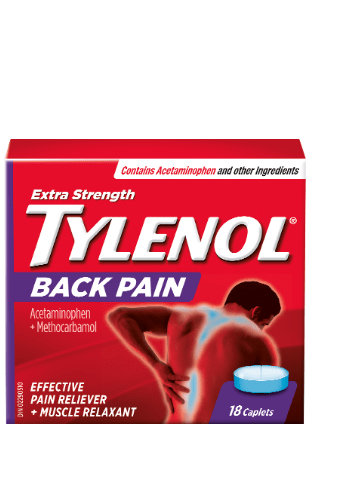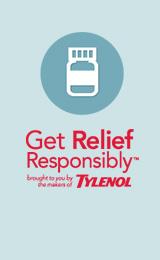How to Relieve Muscle Strains & Sprains
How to Relieve Muscle Strains & Sprains

The most common soft tissues injured are muscles, tendons, and ligaments1. Sprains and strains are common soft-tissue injuries, and it is important to learn how to properly treat them should they occur1. After all, the sooner you start treatment for a sprain or strain, the faster you will recover.
What are muscle strains and sprains?
Muscle strains and sprains are often sudden, acute injuries that can occur almost anywhere at any time1. They typically occur when engaging in an activity that requires sudden movement, such as playing a sport or lifting heavy objects1. However, they can also happen while doing simple, everyday activities such as walking down the street, going up and down stairs or tripping and falling.
Sprains and strains are often grouped together because they are very similar to each other. What causes them, how they are treated and how they can be prevented are all the same. Even though muscle strains and sprains are very similar, they are two different types of injuries. The biggest difference when it comes to strains vs sprains is the type of soft tissue that is damaged during the injury2.
Strains
When identifying what a muscle strain is, you need to look at the tendons and muscles3. A strain occurs when the tendon, which is the soft tissue that connects muscle to bone, is damaged or when the muscle itself is damaged3.Strains can generally vary in severity and as such, so the signs and symptoms.3.
Sprains
A sprain, on the other hand, is an injury to the ligaments. Ligaments are strong, flexible soft tissue fibers that provide stabilization by adding additional support to joints that connects the end of one bone with another4.
Even though ligaments are flexible, they can become overstretched and even tear. When this happens, it is considered a sprain1. Similar to strain, sprains can also vary in severity5.
Symptoms of muscle strains and sprains
The symptoms of muscle strain and sprain are similar since both are a soft tissue injury. The symptoms you experience will vary depending upon the location and severity of the injury2. Common symptoms of muscle strains and sprains include2:
- Pain - may not occur if the sprain or strain is minor.
- Difficulty with movement - it will be difficult, if not impossible, to move as you did before the injury.
- Weakness in the muscle - your injured area may feel tired, weak, or extremely fatigued.
- Bruising - bruising is more common with sprains than strains.
- Redness or a feeling of warmth.
- Swelling.
- Muscle spasms – your muscles may feel like they are twitching, jumping or cramping3.
Symptoms of sprains and strains are like other health problems and injuries. Seeing a doctor is important as they can identify the differences between strains vs. sprains, but they can also determine the reason behind your pains.
Causes
Muscle strains and sprains can occur anywhere at any time. However, engaging in certain activities can increase your risk of experiencing a muscle strain or sprain.
Common causes of muscle strains and sprains include:
- Making a bad landing after a jump5.
- Lifting or moving heavy objects3.
- Making a sudden pivoting motion such as turning around or changing directions suddenly when running4.
- Making prolonged repetitive motions6.
- Slipping and falling1.
- Overuse6.
- Playing a sport, especially one that is high contact or involves a lot of movement6.
Muscle strains and sprains can happen anywhere on the body. However, some areas are more prone to experiencing muscle sprains and strains.
Muscle strains commonly occur in the following areas:
- Neck7
- Back1
- Hamstring1
- Biceps9
- Calf8
- Shoulder
How mild muscle strains and sprains are treated
Mild muscle strains and sprains can often be treated at home with the use of the R.I.C.E method. R.I.C.E is a quick way to remember what to do for treatment of muscle strains and sprains. It stands for rest, ice, compression, and elevation.10
When applied promptly after an injury, usually within 24 to 48 hours, the rules of R.I.C.E for muscle strain treatment can often speed up the recovery process11.
The following are the rules of R.I.C.E: 12
- Rest - Avoid activities that cause pain, swelling or discomfort.
- Ice – Apply ice to the injured area helps to reduce pain and minimize swelling. Use an ice pack or slush bath of ice and water for 15 to 20 minutes each time and repeat every two to three hours while you are awake for the first few days after the injury.
- Compression – Compress the area with an elastic bandage until the swelling stops. An elastic bandage should be used as it is flexible and allows the injured area to be compressed without limiting or restricting blood flow.
- Elevation - Use pillows to elevate the injured area and try to keep it above heart level to reduce the swelling.
For additional pain relief, you can take an over-the-counter pain medicine such as TYLENOL® Muscle & Body for mild to moderate aches and pains due to muscle sprains and strains. Please always read and follow the label to make sure any TYLENOL® product is right for you.
Even if you promptly start R.I.C.E therapy after an injury, it is recommended that you visit a doctor as soon as possible for a complete examination. A doctor can conduct a physical examination and order any additional testing, such as x-rays or MRIs, which not only helps with accurately diagnosing your injury, but it helps determine the best treatment.
Prevention Tips
Muscle strains and sprains cannot be entirely prevented. However, there are things you can do to reduce your risk of experiencing a muscle strain or sprain.
The following are examples of things you can do that will help to prevent muscle strains and sprains: 1
- Daily stretching of muscles - stretching keeps the muscles and surrounding soft tissue flexible, yet strong, which can reduce your risk for injury.
- Properly warm up before exercising - performing a quick warm up before exercising increases blood flow to the muscles. Muscles tend to perform better, which reduces your risk for injury, when there is good blood flow.
- Exercise regularly - regular exercise keeps the muscles strong and healthy.
- Properly hydrating while exercising - dehydration can cause muscles to tighten and spasm which puts you at risk for strains and sprains. Drinking plenty of water while exercising can keep you from becoming dehydrated.
Takeaway
Muscle sprains and strains are a common, yet sometimes painful injury that can happen to anyone at any age. While it is best to prevent an injury before it occurs, that isn't always possible. Learning the R.I.C.E method and keeping over-the-counter pain medications, like TYLENOL® Muscle & Body, on hand can be helpful until you can see a healthcare professional.
Visiting a healthcare professional after an injury is recommended even if you promptly used the R.I.C.E method. A healthcare professional can conduct a physical exam, provide you with a proper diagnosis and monitor your recovery.
Sources
- https://orthoinfo.aaos.org/en/diseases--conditions/sprains-strains-and-o...
- https://www.mayoclinic.org/diseases-conditions/sprains/symptoms-causes/s...
- https://www.mayoclinic.org/diseases-conditions/muscle-strains/symptoms-c...
- https://whenithurtstomove.org/about-orthopaedics/conditions-and-ailments...
- https://my.clevelandclinic.org/health/diseases/15461-sprains-of-the-ankl...
- https://my.clevelandclinic.org/health/diseases/22336-muscle-strains
- https://myhealth.alberta.ca/Health/aftercareinformation/pages/conditions...
- https://www.hss.edu/conditions_muscle-strain.asp
- https://orthoinfo.aaos.org/en/diseases--conditions/biceps-tendon-tear-at...
- https://myhealth.alberta.ca/Health/Pages/conditions.aspx?hwid=tw4354spec
- https://www.health.harvard.edu/pain/recovering-from-an-ankle-sprain
- https://www.mayoclinic.org/diseases-conditions/muscle-strains/diagnosis-...
- https://www.canada.ca/en/health-canada/services/food-nutrition/healthy-e...

TYLENOL® Back Pain
Pain relief you can count on.
GET RELIEF RESPONSIBLY®
Learn more about safe acetaminophen usage.



